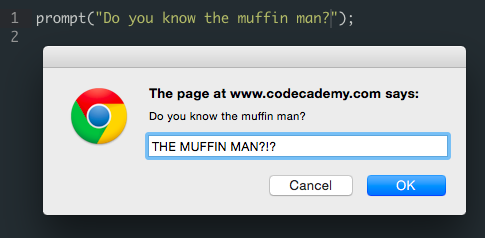Starting Javascript
After speaking speaking to Jan and Luca, we learned that the two projects we were interested in pursuing might involve Javascript, or at least we would benefit in knowing Javascript if we were to be involved in either. I had a strong interest in learning Javascript after attending an Angular workshop.
So we took the necessary steps: we got JavaScript: The Good Parts and JavaScript: The Definitive Guide and we signed up for the codecademy’s JavaScript course and we faced this thing head on!
My first impressions of Javascript were very posistive. I really like codecademy’s course. It reminded me of going through try ruby when I first attended Rail’s Girls St. Pölten (especially string.length). In fact, I liked it so much that I added it to my dailies on Habitrpg (my to do list manager). One of the things I really liked about it was that it had varied learning methods kind of like Duolingo has for languages, for example, besides just having you type in commands to the terminal by copy pasting, it challenges you by not giving you the answer or simply stating, “Type this into the terminal: thing to copy into the terminal”. I was very pleased when I logged on one morning and the beginning of the chapter I was starting began with a little challenge off of something that had been taught two chapters ago. It was a great recap and shows that this is more than just a tool to copy-paste answers to “learn” a programming language.
The boolean challenge was the first one I had to get a hint for. Even though I’m familiar with boolean logic, I wasn’t sure how to use it in Javascript and the explanation didn’t really show an example first, so I used a hint and it was clear right away.
There were examples of pre-written code where you have to fix it to do a certain thing, and that felt pretty great because it made me feel like I actually understood what the code was supposed to do. Makes you feel like you get it and it works!
One a side note: when I got to the operators, I just had to know why the “equal to” and “not equal to” operator had one “=” more than C++. As usual, found a really great and interesting answer on stack overflow, it’s pretty interesting if anyone’s curious.

Did I mention, I had ridiculous amounts of fun doing this course?
I would highly recommend the course to anyone wanting to get a small start on JavaScript. It’s simplified, but it explains when it is so and does teach the correct syntax as you progress.
~Pilar
